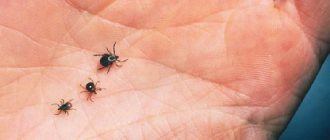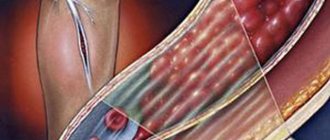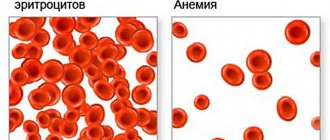Swine flu, the symptoms and treatment of which are described in this article, is considered an extremely dangerous disease. To prevent it, it is recommended to vaccinate and adhere to standard preventive measures. Doctors strongly discourage self-prescription of treatment, which can not only worsen the patient’s condition, but also lead to death.
Overview of Influenza A (H1N1)
It is believed that the outbreak of swine flu occurs during the New Year holidays - people stay at home for a long time, their immunity is reduced due to the consumption of large amounts of fatty foods and alcoholic beverages. By the way, it is precisely because people are in their homes that cases of influenza with severe complications are recorded very often - patients turn to doctors in critical condition.
Please note: the same picture is repeated year after year: first the influenza B virus rages, then the H1N1 flu begins to appear, but it quickly “burns out” and the influenza B virus comes again, which can slowly infect people. And even the period of such a wave-like infection occurs at the same time every year - from January to March.
A large percentage of swine flu cases were observed in 2009 – then deaths were recorded, and the severe course of the infection was clearly visible. Doctors predicted an outbreak of influenza A (H1N1) in 2019 in advance; this strain was included in the vaccine with which a large number of people were vaccinated - this made it possible to create a good immune layer among the population. And yet, from the beginning of 2019, dangerous swine flu began to actively spread throughout the countries of the Northern Hemisphere - Russia, Ukraine, Turkey, Israel.
Virology of the disease
African swine flu is a type of acute respiratory disease. The virus easily passes from animals to people and from person to person. There are several subtypes of this type of influenza:
- H1N1
- H1N2
- H3N2
- H3N1
The disease epidemic has been assigned a 6th danger class due to the fact that the infection is rapidly spreading across countries and entire continents. The swine flu virus attaches to a cell and then enters it. The infectious agent is prone to mutation, it is quite deadly and is transmitted through airborne contact.
Swine flu symptoms
The danger of the disease in question lies in its rapid development, so everyone needs to know the symptoms of swine flu clearly. These include:
- Severe intoxication of the body, which always manifests itself suddenly - the patient can literally name the hour when he felt unwell.
- Hyperthermia is a high body temperature that can reach critical levels.
- Headache of a sharp nature, intense - the patient is irritated by bright light, noise and any movement.
- Problems in the functioning of the respiratory system - patients complain of a dry cough.
- General weakness, accompanied by aches throughout the body.
- A feeling of compression of the lungs - patients complain of severe pain in the chest, the inability to take a deep breath and exhale.
Very rarely, symptoms of influenza A (H1N1) include a runny nose and conjunctivitis.
There is a designated group of people who are at risk for infection with the influenza A virus. It includes:
- children under 5 years of age;
- pregnant women;
- people over 65 years of age;
- patients with previously diagnosed chronic pathologies - for example, pulmonary diseases, kidney problems, and so on;
- people with diabetes and heart disease;
- patients with severe obesity.
Historical information about the causative agent of swine flu
The swine flu virus was discovered by a group of American scientists led by Richard Shoup in 1931.
The disease was common in rural areas, as it affected domestic animals, namely pigs. Swine flu symptoms were mistaken for complicated forms of acute respiratory infections. The incidence of swine flu began to be recorded only at the end of the 20th century. Mostly farmers, veterinarians and those who cared for pigs were sick. Nobody took swine flu seriously. This was the case until 2009.
The year 2009 is etched in world history as the year of the swine flu pandemic – “California/2009”. The largest number of patients was in Europe, Russia, China, and Japan. Signs of swine flu have been detected in more than half a million people. The most susceptible to swine flu are children and young people under 25 years of age. The swine flu virus was classified as the sixth class of danger.
Why is swine flu dangerous?
It is influenza A (H1N1) that poses a particular danger to human health and life - this disease is characterized by the development of severe complications. These include:
- Changes in the structure of the blood - it becomes thicker, coagulability increases, and the risk of blood clots reaches the highest level.
- Within 1-2 days, swine flu develops into viral pneumonia, which is often accompanied by pulmonary edema.
- The influenza virus has a detrimental effect on the kidneys - this can trigger the development of nephritis.
- The myocardium of the heart is negatively affected by the virus.
Please note: it is viral pneumonia, which develops rapidly against the background of swine flu, literally within a few hours/days, that most often leads to the death of the patient.
Head of Rospotrebnadzor Anna Popova:
“That is why, literally on the very first day, constant monitoring by a doctor is necessary: call him at home, because only a specialist can prescribe adequate treatment. Many regions where the active spread of influenza has already begun are introducing this practice - a patient with a confirmed diagnosis of influenza does not go to the hospital every five days to extend his sick leave, but every day he describes his condition to the attending physician in a text message. In no case should the condition be allowed to worsen; if a person feels that he is having difficulty breathing, urgent hospitalization is necessary.”
What vaccines are used against the h1n1 virus
Predicting the activity of the h1n1 virus makes it possible to create the necessary vaccines that help in the formation of immunity to this disease. The vaccination should be done a month before the expected start of the epidemic. The swine flu vaccine is a homogeneous, colorless or yellowish liquid, which, depending on its type, is administered by injection or nasally.
There are two main types of classification of injections:
- by country of origin - foreign (Germany, Belgium, France, etc.) and Russian. Their effectiveness indicators are equal, but the Russian ones contain fewer viral particles;
- by type of antigen - based on live or inactivated bacteria, as well as biosynthetic. The live virus is weakened so as not to cause harm to the body. The other two types use protein fragments from bacteria.
The Russian Ministry of Health recommends 11 types of injections, including Grippol, Influac, Agripol, Vaxigrip, Begrivak and others.
Long-term storage of vaccines is not provided. Every year new types are developed taking into account the modification of the h1n1 virus.
For those who are guided by cliches, the h1n1 flu vaccine may seem like the source of the disease, but it is thanks to it that a person is able to avoid the serious consequences of this serious illness.
How to recognize swine flu
Sometimes it is very difficult to immediately determine the development of swine flu - many patients mistake its symptoms for signs of a common cold or acute respiratory viral infection. This entails inadequate treatment, missing the first hours of the disease and the development of severe complications.
The following table will help you distinguish between the symptoms of swine flu and a common cold:
| Symptoms | Cold | Flu |
| Temperature | Sometimes, usually not high | Almost always, high (38-39C°, especially in young children), lasts 3-4 days |
| Headache | Sometimes | Often |
| Other pains | Not strong | Often, strong |
| Weakness, lethargy | Sometimes | Often, it can last 2-3 weeks. |
| Serious condition, exhaustion | Never | Often, especially at the beginning of the disease |
| Stuffy nose | Often | Sometimes |
| Sneezing | Often | Sometimes |
| A sore throat | Often | Sometimes |
| Chest discomfort | Light to moderate | Often, it is strong |
| Cough | Dry cough | |
| Complications | Sinusitis, inflammation of the middle ear | Sinusitis, bronchitis, otitis media, pneumonia, etc. life-threatening |
| Prevention | Wash your hands often and avoid contact with people with colds | Wash your hands often, avoid contact with people with the flu, get a seasonal flu shot, talk to your doctor about antiviral medications |
| Treatment | Antihistamines, decongestants, anti-inflammatory drugs | Antihistamines, decongestants, analgesics (ibuprofen, paracetamol), antivirals in the first 48 hours after the development of symptoms. Antigrippin is an effective remedy for both colds and flu. Ask your doctor for more details. |
Treating swine flu at home
There are effective folk remedies based on natural products that help eliminate flu symptoms and ease the course of the disease.
They soothe a sore throat, reduce fever, relieve swelling, remove phlegm and relieve cough.
Medicines help manage flu symptoms but do not kill the virus itself.
Medicinal plants, fruits and vegetables
Using some medicinal plants, fruits or vegetables, you can strengthen your body to fight the flu.
- Echinacea – Helps temporarily boost the immune system. The powerful organic compounds and essential oils in this plant may be one of the best ways to boost your body's defenses against swine flu. You can gargle with echinacea tincture by diluting a few drops in warm water.
- Garlic is one of the versatile and effective home remedies for swine flu. The active ingredient in garlic, allicin, interacts with the body in a rather unusual way, stimulating antioxidant activity while killing harmful microbes. Eating a clove of garlic with food can ensure a speedy recovery.
- Elderberry has diuretic and laxative properties and easily causes sweating. Elderberry tea removes toxins through the pores of the skin, cleanses the body, which will help speed up recovery.
- Recent studies conducted after the latest H1N1 outbreaks have shown improved health in patients treated with ginseng. The results were very encouraging - drinking ginseng tea and dietary supplements with it counteracts various strains of the virus.
- Honey has natural antibacterial properties, making it an effective immune booster. Honey will help speed up the recovery process in case of illness. Mixing honey with ginseng or ginger in tea can enhance the antimicrobial effect, effectively relieving swine flu symptoms.
- Pineapple Juice: The benefits of fruit juice are widely known in folk medicine. Thanks to its high concentration of vitamins, minerals and antioxidants, pineapple juice helps provide the immune system with vitamin C, which increases the production of white blood cells.
- Cayenne pepper: The substance capsaicin contained in the product has powerful antimicrobial and antiviral properties. The plant perfectly warms the body; pepper essential oil is used for baths and inhalations.
Other flu treatments at home
- Vitamin A is one of the most important nutrients in the human diet, and carrots, which contain a high concentration of this vitamin, can provide beta-carotene, a powerful antioxidant. It effectively cleanses the body of foreign agents and free radicals, which often weaken the immune system and allow infection to enter.
- Many people forget that vitamin D must be part of a daily regimen produced by sunlight. Vitamin D is synthesized in the skin and helps maintain the function of many body systems, strengthens bones, and generally improves immunity.
- Olive oil contains polyphenols and flavonoids that protect against swine flu symptoms, including nausea, chills, fever, cough, headache and general weakness.
- When vomiting and diarrhea during swine flu, you need to drink water regularly - this is necessary to normalize sweating and urination. Drinking plenty of fluids will help remove harmful substances from the body and replenish water loss.
- Regular physical exercise is a good response to any ailment, as it helps cleanse the blood and strengthen immune function.
- Don't forget to stay in bed. Quality sleep gives the body time to rest and recuperate from exhaustion, restoring the immune system. Let the body focus on protection and repair without wasting energy on other activities.
Features of influenza A (H1N1)
It is worth knowing that swine flu is transmitted by airborne droplets - you can become infected by being near a sick person who is sneezing and coughing. For example, in a movie theater, flu viruses, when sneezed by an already sick person, spread 10 meters around.
Virologists identify several distinctive features of the course of swine flu:
- Headaches are localized in the forehead area - patients complain of heaviness of the brow ridges. Even a simple attempt to open the eyes and lift the eyelids completely leads to intense, boring pain in the eyeballs.
Please note: if a child of preschool age with cold symptoms begins to complain of a headache, then immediately call a doctor - headaches are not typical for preschool children.
- If a person with a cold has a history of heart disease or hypertension, then if you complain of profuse cold sweat against a background of high body temperature and difficulty breathing, you should call an ambulance. This is a sign of the development of swine flu, and especially for heart patients and hypertensive patients, it quickly turns into viral pneumonia with pulmonary edema.
- Influenza A (H1N1) is characterized by respiratory failure - the patient cannot take a deep breath, he is tormented by a constant feeling of lack of air, the breathing rhythm becomes very fast.
Complications from swine flu can affect almost every organ:
Pathogen penetration
The incubation period for swine flu is approximately 2-3 days . But the disease can appear on the first day after infection. It is possible that infection may develop a week after contact. If you do not get sick within ten days after meeting the pathogen, then you can consider yourself lucky. The swine flu virus spreads ten meters by sneezing and coughing. It easily enters the body of a healthy person through inhalation. Having settled on the mucous membranes of the upper respiratory tract, the pathogen gradually descends. You can become infected with this unpleasant disease through contact. It is enough to simply hold on to the objects that the infected person took, and then rub your nose or touch your lips.
The first hours after infection
Immediately after the pathogen enters the body, symptoms of swine flu do not appear in adults. Strong acquired immunity, supplemented by innate immunity, tries to fight infection. But blood counts are already changing. If you go to the laboratory, you will be able to notice this. Within a day, the first manifestations of the disease may appear. From this moment the person understands that he is sick.
Main symptoms
How to recognize swine flu? Very simple! The disease, unlike a cold or acute respiratory infection, does not begin gradually. Usually a person can name the time of day or even the hour when he felt worse. The manifestations are immediately very pronounced. It seemed that just recently you were cheerful and full of energy, but now you feel the symptoms of the disease. What should they be? Learn the main signs that distinguish swine flu from a cold.
We also recommend: Grippol Plus protects against swine flu
Fever
The temperature with the swine flu virus lasts for up to five days. The thermometer readings are reaching critical levels. Most often, adult patients benefit from high doses of medications based on paracetamol or ibuprofen. But if complications begin, they may be powerless.
Doctors prohibit the use of Aspirin in this disease to eliminate fever. Taking this medication may cause disruptions in the functioning of the circulatory and vascular system.
Swine flu fever can last up to 5 days
General health
A person who has contracted the swine flu virus suddenly begins to feel unwell. A few hours or days after the virus enters, weakness appears, accompanied by a headache. There is a feeling of sand in the eyes. A sick person cannot look calmly at daylight and, especially, sunlight. His lacrimation immediately begins, and his eyelids close involuntarily. Closing your eyes also hurts. If you do not take painkillers at this moment, then after a few hours you will not be able to open your eyes wide at all. Attempts to do this cause severe pain in the forehead.
With swine flu, an adult experiences muscle pain. However, this symptom can also be found with seasonal flu. The skin becomes especially sensitive. It is very difficult to touch. Any touch causes irritation and provokes the appearance of goosebumps.
From the respiratory system
Swine flu causes complications quite often. They are manifested by viral and bacterial diseases of the lower respiratory organs. But even without them, a person feels a violation of respiratory function.
With the declared disease, shortness of breath often occurs, the pulse quickens, and tachycardia occurs. All this is aggravated by chronic diseases, which every adult now has. Sore throat, irritation of the mucous membranes of the trachea with thick sputum provoke a cough. Most often it is dry and unproductive. The sick person tries to clear his throat, which often leads to a gag reflex.
Distinctive features
Important symptoms that distinguish this disease from others are nausea with diarrhea. Many also develop vomiting, aggravated by a severe cough. In this way, the body tries to get rid of toxins that have entered it. Inside the intestines, under the influence of a viral infection, the absorption of nutrients and the breakdown of sugars are disrupted. As a result, a large amount of fluid from the entire body is attracted there. The stool is initially loose and rapid, and subsequently watery. There is fermentation, seething in the stomach, increased flatulence and colic are noted.
Severe cough is one of the hallmarks of swine flu
Important nuances
There is a lot of debate about how to behave when the first symptoms of swine flu appear. But the main recommendations of doctors are as follows:
- There is no need to reduce the temperature too zealously. An increase in temperature is a signal that the body's immune forces have begun to fight the infection. But too sharp a jump has a bad effect on the functioning of the heart. The threshold is 38 degrees Celsius. If during flu the temperature reaches 38.5 degrees (for small children - up to 38 degrees), it is better not to take anything antipyretic. If it is higher, use products with paracetamol, ibuprofen, if there are no contraindications. If the temperature does not decrease, immediately call an ambulance, be sure to report the measures taken and that the fever does not subside.
- There is no antiviral food and drink, no matter how pseudo-helpful notes on social networks present it to us. But the following will help activate the immune system:
- natural fermented milk products (low-fat yogurt, ayran, tan),
- citrus fruits (this is a classic: for patients - a bunch of oranges to lift their spirits, or better yet, lime in their tea and grapefruit a day - they also help the heart survive flu stress). Vitamin C, which they are rich in, and pectins help remove phlegm from the lungs and reduce the risk of congestion.
- Fruit drinks of all types (from lingonberries, cranberries, currants), except sweet ones (excess sugar interferes with the removal of viruses from the body).
- natural proteins that are easily digestible and strengthen the heart - eggs, turkey, chicken breast, rabbit, fish.
- You should not self-medicate - the result will be disastrous. Yes, it is possible and necessary to provide the patient with plenty of fluids, but no medications should be taken! Usually, in case of severe swine flu, doctors prescribe antiviral drugs, but they are selected on an individual basis. If the situation requires resuscitation, the presence of medical workers next to the patient will save his life.
Differences between swine flu and seasonal and ARVI
Patients are wondering: what to use against swine flu? Before taking any medications, you need to make sure that the diagnosis is correct. If you cannot see a doctor at the moment for some reason, then pay attention to how you feel, note some factors and conduct a comparative analysis.
- The temperature during a cold is usually absent or rises slightly; with the flu it reaches critical levels.
- Pain with the flu is frequent, but with ARVI it is insignificant and rarely bothers you.
- Weakness or a serious condition with the flu always appears, but with ARVI they practically do not bother you.
- Runny nose, sneezing and nasal congestion are absent with the flu, but with a cold they are present in most cases.
- With a cold, there is no or mild discomfort in the lower respiratory tract. With the flu, it is severe and accompanied by pain.
We also recommend: Swine flu
Treatment and prevention
Before treating swine flu at home, be sure to consult a doctor. Often people use antibiotics for this, which only worsens their already unpleasant state of health. Influenza is corrected exclusively with antiviral drugs, which also have anti-inflammatory and immunomodulatory effects. Drugs that relieve symptoms are also used: painkillers, antipyretics, antihistamines, mucolytics, expectorants. In order to normalize digestive function, antiemetics and fixatives, sorbents and antioxidants are used.
At home, stay in bed, drink more, eat less. Protect all your loved ones from contact with you.
To prevent the flu, maintain your immunity : take vitamins, harden yourself. When you return home, be sure to wash your hands with soap and use antibacterial gels. During epidemics, apply antiviral agents to the nasal mucosa. Immunomodulatory complexes can be taken as prescribed by a doctor. In large groups and crowds of people, wear a protective mask and change it for a new one every 2-3 hours. Protect yourself from shopping and be sure to get a flu shot.
Temper yourself so you don't get sick
What to do as part of prevention
When the season of mass infection with the influenza A (H1N1) virus begins, it is worth taking certain preventive measures - they will help reduce the risk of infection significantly. Virologists give the following recommendations:
- You should not visit places with large crowds of people - it is better to exclude theaters, discos, cinema centers, shopping centers and the like from your routine.
- After visiting various institutions, being on the street and on public transport, wash your hands with soap and be sure to have special disinfectant wipes with you - you can wipe your hands and face with them.
- Rinse your nose with saline solution as often as possible throughout the day. An alternative could be seawater sprays - they are sold in pharmacy chains and have a very reasonable price.
- Before leaving home and going to work or any other place, lubricate your nostrils (the direct entrance to the nose) with oxolinic ointment - a barrier will be provided to viruses.
- A medical mask is not a panacea for the flu. Viruses are so small that they penetrate through the smallest pores. But it is quite suitable as an additional security measure, especially if you need to move and communicate a lot. A caveat: wear a mask only in transport or in closed spaces where there are a lot of people. Outdoors, the chance of infection is minimal, so don’t torture yourself.
- The house or office must be ventilated daily, and each procedure must take at least 15 minutes. Remember - swine flu spreads only in a warm and dry room, it is afraid of cold and dampness.
Swine flu is a dangerous disease that can lead not only to serious consequences, but also to the death of the patient. Only immediate seeking help from doctors and strict implementation of all recommendations and prescriptions of specialists can prevent such developments. By the way, if swine flu is mild, the disease goes away within 1-3 weeks without any consequences in the future.
Tsygankova Yana Aleksandrovna, medical observer, therapist of the highest qualification category.
26, total, today
( 54 votes, average: 4.30 out of 5)
Colorado influenza virus type B in 2019-2020: why is it dangerous?
Meningococcemia in children
Related Posts
Preventive actions
During a swine flu epidemic, prevention should be as thorough as possible to protect yourself from infection. Doctors give general recommendations to help reduce the risk of viral infection:
- Avoid public places where large numbers of people gather. During the pandemic, it is better to avoid visiting cultural and entertainment events and public transport;
- When you come home after going outside, wash your hands thoroughly with soap. Stock up on disinfectants and wipes that you can use to clean your face and hands. This should be done as often as possible;
- purchase a seawater spray at the pharmacy and treat the nasal cavity with it whenever possible;
- When leaving the house, smear the wings of your nose and the fold above your lip with Oxolinic ointment. This will create a barrier to the virus;
- Remember, a medical mask cannot protect you from infection, but you should not neglect it either. This personal protective equipment is especially useful in crowded places;
- The room in which you spend most of your time (apartment and office) must be ventilated at least twice a day. For swine flu, a cold and damp atmosphere is detrimental. But dry and warm air contributes to its spread.
Swine flu is a very dangerous disease that can cause irreparable harm to your health and even cause death. To protect yourself as much as possible from negative consequences, contact your doctor immediately and strictly follow all his instructions. Treating swine flu on your own is unacceptable. A timely visit to the hospital and following the recommendations will help you cope with the disease in a couple of weeks, without harm to the body.
Flu symptoms
Symptoms are similar to regular flu.
- A high temperature appears: 38-40 degrees.
- The whole body aches.
- Headache.
- Stuffy nose.
- Sore throat.
- Dry cough (may or may not exist).
- Weakness and chills.
- Nausea, vomiting, and diarrhea may occur.
If these symptoms appear, consult a doctor immediately. Do not self-medicate under any circumstances.
Secondary manifestations of pathology
In the evening of the same day or the next day, the patient may experience secondary manifestations. Pain in the eyes is added to the headache and high temperature. It feels like sand has been poured into them. Photophobia may appear and the eyes will water. A person experiences unpleasant sensations upon contact with skin. If you touch the body, tactile irritation appears. The viral infection affects the muscles. There is a feeling that they are being twisted.
With swine flu, a sore throat may be accompanied by a dry cough. Swelling of the peripharyngeal ring manifests itself as pain when swallowing. A sick person loses his appetite. Not only does he not want to eat, but he also doesn’t want to drink heavily. A runny nose with the AH1N1 virus develops in several stages. At first, a person feels dryness in the nose, burning and itching. During this period, frequent sneezing may occur as the body tries to clear the airways of the irritant. The second stage of a runny nose appears within a few hours. Liquid mucus flows from the nose, and it can also flow down the back of the throat, further provoking a cough.
In most cases, sick people experience changes in their sense of taste and a dull sense of smell due to swelling in the nose. But swine flu is not always accompanied by a runny nose. The disease can occur without this symptom.
Frequent sneezing is a secondary sign of illness
There are distinctive signs of how swine flu manifests itself. Symptoms are as follows: bloating, heartburn, nausea, vomiting and diarrhea. With a seasonal form of the disease or during ARVI, they are usually not detected.
We also recommend: Grippol Plus protects against swine flu
Information about the disease
This flu differs from the usual flu in its rapid course.
The disease develops rapidly, complications arise a few days after the onset of the disease. But sometimes people tolerate this pathology more easily than a common cold. The h1n1 virus (swine flu) is an infectious disease that affects the respiratory tract. Usually a person becomes infected with it through airborne droplets. A child can get swine flu after interacting with a sick person. The average duration of the incubation period is 3-4 days. How does swine flu manifest? Symptoms: severe fever, chills, weakness, and cough.
Today in medicine it is customary to distinguish several forms of this virus, but the most common are 3 subtypes, conventionally called A, B and C. The most dangerous subtype for humans is A.
Treatment and prevention of swine flu
The best prevention is vaccination. However, given the fact that the so-called swine flu is no more dangerous than the regular seasonal flu, it makes more sense to vaccinate against seasonal flu, and these vaccines are more effective.
When thinking about vaccination, you should know and remember the general contraindications to vaccination:
- immune disorders, but not HIV infection;
- acute infectious diseases;
- acute illness (at a temperature exceeding 38-38.5°C);
- period of exacerbation of a chronic disease;
- allergy to vaccine components (especially egg white);
- pregnancy (mostly in the first trimester).
According to official recommendations, in the case of swine flu , the use of one of two drugs is indicated: oseltamivir or zanamivir. These drugs are used both in case of confirmed infection and during post-exposure prophylaxis.
However, given that a significant proportion of influenza virus infections are mild, these drugs are mainly used only in debilitated, multi-diseased or elderly patients. These drugs belong to the group of neuraminidase inhibitors.
Causes and ways of spreading the virus
The main sources of infection are infected pigs and humans. A person infected with the swine flu virus becomes a spreader of the infection a day before the appearance of characteristic symptoms. The risk of infection from an already sick person persists for a week.
The risk of infection from potential patients whose swine flu virus is in the incubation period is especially dangerous, when the disease itself has not been detected.
Without knowing about infection with the virus, a person becomes epidemically dangerous to others. According to data, in 15% of cases the virus retains the ability to reproduce for 10–14 days even during treatment.
How is it transmitted:
- Airborne or aerogenic route. When an infected patient sneezes or coughs, the virus spreads in a diameter of 1.5-2 meters;
- The virus has a viability of more than two hours. When using shared cutlery, bedding, hygiene items, or touching the hands of a patient, there is a high probability of introducing the virus to the mucous membranes of the nasopharynx or eyes.
The most severe clinical picture of the disease is observed in the following age groups:
- Children under 5 years of age;
- Elderly people over 65 years of age;
- Women during pregnancy;
- Patients with chronic pulmonary, oncological, heart diseases; for diseases of the liver, blood, urinary tract, diabetes mellitus or infectious immunodeficiency (HIV).
Diagnostics
Diagnosis of swine flu, like any other disease, is based on the identification of clinical symptoms and laboratory testing. In the second case, samples taken from a sick pig are studied. This research is carried out in two ways:
Study of nasal lavage or scraping from the nasal cavity
- Study of nasal lavage or scraping from the nasal cavity. The resulting material is exposed to various sera, which help identify the exact strain of the pathogen.
- Blood sample examination. In this case, the goal is not to identify the influenza virus itself, but the antibodies produced to fight it. Within 10-14 days from the onset of the disease, their amount in the blood increases more than 2 times. And if such an increase is observed, it means that the pathogen is present in the blood and its exact identification is carried out.
Reference. The H1N1 virus and its derivatives are similar in symptoms and specific development to many other respiratory tract diseases. Therefore, laboratory tests during diagnosis are mandatory to accurately determine the nature of the pathogen.
To treat or not to treat?
There is an opinion that treatment of swine flu in humans may not be carried out. In people with strong immunity, signs of pathology persist for 3-7 days, after which a period of recovery begins. Unfortunately, complications of the AH1N1 virus have become more frequent in recent years. Therefore, doctors still prefer to prescribe appropriate therapy. People at risk should definitely consult a doctor and get individual recommendations:
- pregnant women or nursing mothers;
- children under 7 years of age;
- pensioners;
- with chronic diseases (cancer, pathologies of the blood, liver, heart, neurological abnormalities).
When the first signs of flu appear, it is better to consult a doctor
If you decide to treat yourself at home, then carefully monitor your well-being. Lack of improvement within 5 days or the addition of new signs should alert you. If in doubt, call an ambulance.
Efficacy of antiviral agents
Almost always, modern antiviral drugs are used for the AH1N1 virus. Many of them also have immunomodulatory and anti-inflammatory effects. A specialist should prescribe suitable medications. Doctors often prescribe medications based on oseltamivir and zanamivir. The last medicine is administered by inhalation. Please note that the products mentioned are sold by prescription only. If you are offered to purchase them without a doctor’s prescription, then know: it is not safe.
The drugs Ingavirin and Kagocel are widely used for the treatment of swine flu. Children are more often prescribed safe drugs based on interferon: “Reaferon”, “Ergoferon”, “Kipferon”. From the age of three you can use Isoprinosine tablets, and from the age of four you can take Cycloferon. These products are over-the-counter, but please consult your doctor before using them.
Symptomatic therapy
Since swine flu manifests itself in humans with high fever, it is advisable to take antipyretic drugs. Many of them can be used independently. Do not forget to study the instructions and follow the prescribed dosage . The most popular antipyretics are Paracetamol and Ibuprofen. You can use their analogues: Nurofen, Advil, Cefekon, Panadol and others. If these substances do not work, and the temperature continues to rise, then it is necessary to use stronger drugs: Nimesulide, Analgin, Ketorol, lytic mixture. Do not lower the temperature with acetylsalicylic acid. For children, this drug may be hazardous to health.
Paracetamol helps reduce fever
For severe nasal congestion, you need to use vasoconstrictors . They will relieve swelling and make breathing easier. Such drugs are designed to reduce the amount of secretion released. You can choose drops and sprays with xylometazoline, naphazoline or oxymetazoline at your discretion. You can use nasal medications for 3-5 days, but no more.
For severe sore throat, use sprays and lozenges. Many of them will have not only an analgesic, but also an antiseptic effect. The following are popular: Strepsils, Hexoral, Tantumverde, Ingalipt. Consider contraindications. Some medications should not be used in children.
Antibiotics are allies of the disease
Many people mistakenly believe that antibacterial medications can help them fight the virus. In fact, taking such drugs will only worsen the course of the disease and provoke complications.
Antibiotics are not recommended for treating swine flu
Antibiotics are known to eliminate bacteria. Moreover, their impact falls not only on pathogenic microorganisms, but also on normal microflora. The latter, in turn, is the key to strong immunity. Thanks to the normal balance of beneficial microorganisms in the digestive system, a person can protect himself from many diseases. In a good environment, it is more difficult for viruses to reproduce. If you take an antibiotic that eliminates the natural microflora, then swine flu symptoms in people will become more pronounced. Viruses will multiply without any difficulty, infecting new organs. Remember that antimicrobial agents should not be used without a doctor’s prescription and preliminary diagnosis.
We also recommend: Symptoms of swine flu in children
How to help yourself at home?
According to doctors, you can cope with swine flu and its symptoms at home. If you have a strong immune system and do not fit into the risk category, you can treat yourself. Follow these recommendations:
- keep bed rest;
- give up heavy foods and drink more;
- gargle with herbal decoctions (chamomile, calendula, sage);
- when coughing, drink thyme tea (it will have an anti-inflammatory and expectorant effect);
- Rubbing will help reduce the temperature;
- to increase the body's resistance, consume vitamin C;
- the room in which the patient is located needs to be ventilated more often;
- the air temperature in the room should be at least 18, but not more than 25 degrees;
- maintain optimal humidity (it is difficult for viruses to multiply if it is between 60 and 80 percent).
Bed rest during treatment is necessary!
The disease subsides in about a week. If during this time you do not feel better, then you should definitely consult a doctor. Protect everyone at home from communicating with you, thereby minimizing the risk of infection.
How to avoid contact with the swine flu virus?
The source of the influenza virus is a sick person . During coughing, sneezing and even active conversation, he releases into the air a whole cloud of mucus droplets, on the surface of which there are infectious agents. In addition, every time a patient touches his nose or mouth, he contaminates his hands with viruses; therefore, all objects that he then touches pose a potential danger. Items at greatest risk include banknotes, door handles, handrails in transport, writing instruments in public places, and mobile phones. Thus, to reduce the likelihood of encountering the swine flu virus, the following rules must be followed:
If possible, avoid visiting crowded places. It is better to postpone going to the circus, cinema and other similar establishments to a safer time. It is also not advisable to visit clinics and hospitals or travel on public transport during the peak of the incidence unless particularly necessary. It is worth reducing the number of trips to supermarkets; it is better not to take children there at all.
- Ventilate rooms more often and do wet cleaning at home and at work.
- Do not go close to an obviously sick person. If the sick person is at home, either he or his loved ones should wear a mask while communicating.
- Wash your hands more often than usual. Outside the home, use wet wipes or special antiseptic sprays, which are sold in every pharmacy.
- Once again, do not touch your nose, mouth and eyes with your hands, especially on the street.
- Forget about handshakes for a while.
All these rules apply to healthy people, but potential sources of infection must also adhere to a certain model of behavior that will protect loved ones, colleagues, and indeed everyone around them from infection. Therefore, doctors strongly recommend that patients with influenza:
Stay home. Do not take sick children to kindergartens and schools. One coughing baby can infect the whole group
- When in contact with people, be sure to wear a mask. It is the sick person who should wear the mask, not the healthy person. This hygienic product is necessary in order to stop droplets of mucus coming out of the patient’s respiratory tract and prevent them from getting into the air. Therefore, it is extremely incorrect to see a situation in which, for example, in a clinic, most healthy people sit in line wearing masks, and one coughing and sneezing person does not.
- Always have disposable handkerchiefs with you to cover your mouth when coughing and sneezing. If you don't have a tissue, cough into your elbow, not your palm.
- Throw away used wipes immediately.
- Wash your hands often.
Prevention
General preventive measures that every person should take:
- Wash your hands regularly with soap, and it is best to treat your hands with hand disinfectants after visiting public places, which can be purchased at any pharmacy or supermarket.
- Avoid contact with people with respiratory illness or public places during a flu epidemic.
- Avoid hugs, kisses and handshakes during flu epidemics and pandemics.
- If you experience flu symptoms, stay home and isolate yourself from other people.
- If you have the slightest suspicion of influenza, immediately consult an infectious disease specialist for medical help.
Nonspecific drug prevention involves the use of one of the following medications: Kagocel, Arbidol, Anaferon, Grippferon, Viferon, Tamiflu.
Specific prevention is carried out by introducing into the human body a vaccine against the swine flu virus, which protects against influenza B, strains A/H1N1 and H3N2 of influenza A. Vaccination cannot cause influenza, since the vaccine does not contain the whole virus, but only its antigens. Immunity develops over 12 months.
The California flu is much easier to prevent than to cure. Timely consultation with a doctor will protect you from complications that often lead to death.
How can you protect yourself from swine flu? Firstly, you need to adhere to a daily routine, sleep for 6-8 hours, try to eat right, and, if possible, avoid overload and stress that weaken the body’s immunity. Secondly, prevention of swine flu includes the use of vitamins and immune boosters. As well as mandatory personal hygiene. We must not forget about proper food processing. So, pork must be thoroughly fried (eating meat with blood is unacceptable).
Over the past decade, the swine flu virus has been actively studied in order to create the most effective vaccine against H1N1. However, there are currently no significant changes in this direction. This is why prevention of swine flu is so important.
What is swine flu in pigs?
Swine influenza is a respiratory disease. In animals, it is provoked by a pathogen, which is the H1N1 virus. The first case of this virus was identified in 1930 by the American scientist Richard Shoup. At that time, swine flu in pigs was traced only in North America and Mexico. The epidemic spread to Europe and Asia by 2009.
It is worth noting that swine flu is an infectious disease. The largest number of cases of pig infection with this virus can be traced in the second half of autumn and winter. But quite often the disease occurs at other times of the year. In this case, transmission of the pathogen can occur in various ways:
- Airborne in close contact between animals.
- Through objects and elements of the room in which sick pigs were kept. A dried or frozen pathogen can remain in the stage of suspended animation for 4 years. If during this time it again enters the respiratory tract of animals or humans, the virus is activated again and begins to multiply.
- Through manure masses.
- With general feeding.
- Through service personnel who became infected from sick animals. Cases of illness among veterinarians and general workers who have been in contact with infected livestock are quite common.
It was also found that the pathogen is capable of living in the body of earthworms for 2 or more years, and even being transmitted to young individuals during reproduction. Moreover, when pigs tear up the soil and eat worms, the virus enters a favorable environment and begins to actively develop.
In general, although swine flu is extremely severe, in most cases it is not fatal for adults. But if young animals succumb to infection, then in 10-60% of cases the disease causes death. In addition, even if the pig survives, its productivity is significantly reduced. What is also characteristic of the impact of this pathogen is that when tissues are damaged, it can create favorable conditions for the development of various pathogenic microflora. This, in turn, can cause secondary, more severe diseases, which aggravate the general condition of the pig.
Pathology can cause secondary, more severe diseases
In animals and humans, the manifestations of swine flu are most often similar. It can be expressed in acute, subacute and atypical forms. In this case, the incubation period, depending on the condition of the animal and a number of other factors, can range from 1 day to a week.











